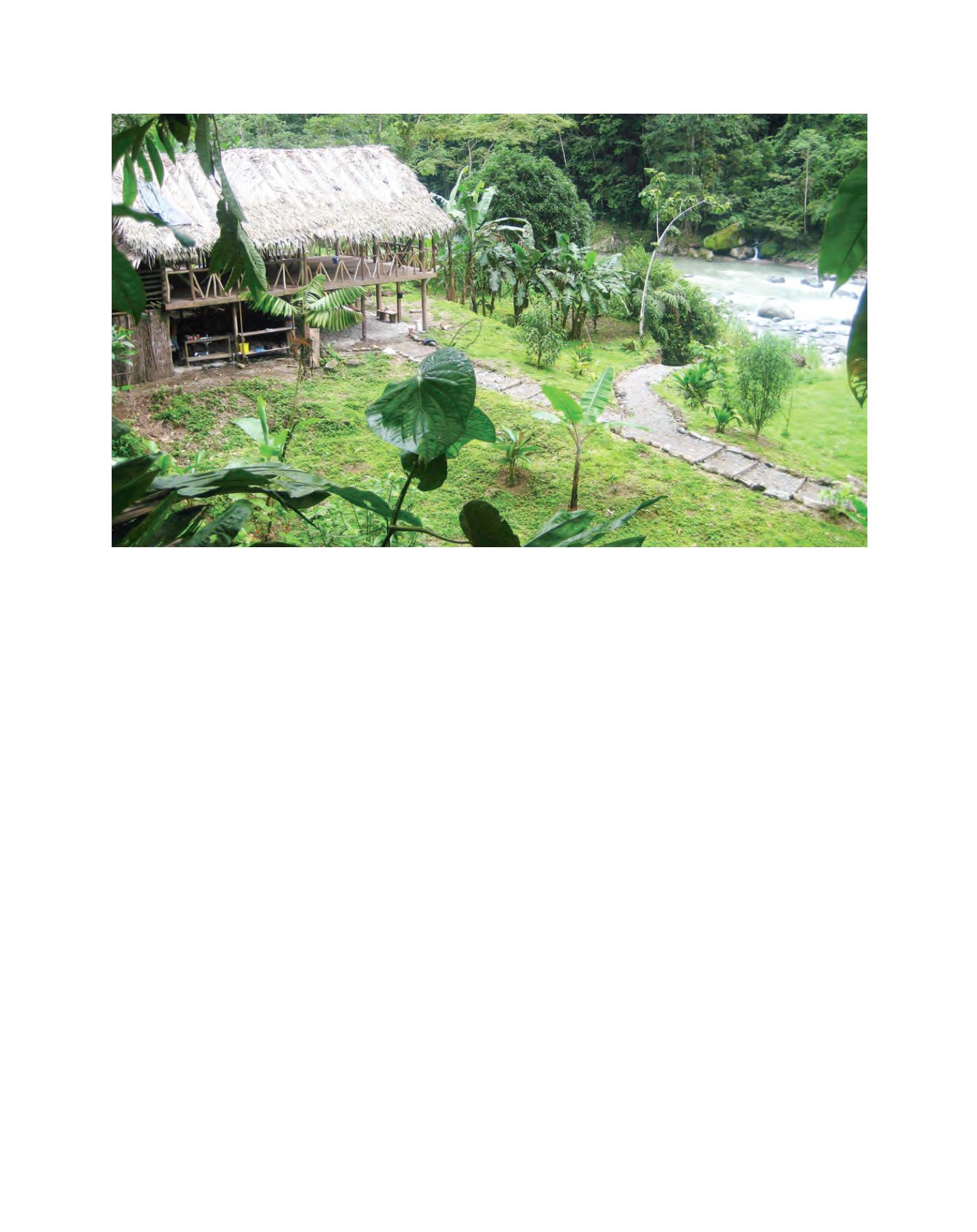

[
] 168
Restoration Initiative is a highly ambitious, comprehensive
national plan to restore forests, land, soil and water over the next
25 years. As a partner to this initiative, Canada announced that
the IMFN Secretariat and AMFN will work with the Government
of Rwanda to identify and support Model Forest development,
tapping into the rich experience of its partners around the world
in support of forest stewardship for this initiative.
Economic development and protected species:
not mutually exclusive
The Araucarias del Alto Malleco Model Forest covers 150,000
hectares in Chile’s IX region. This area is home to a significant
number of Mapuche-Pehuenche indigenous peoples as well as the
protected
Araucaria araucana
tree. Farming, livestock and logging
are the main economic activities in the region, where 53 per cent of
the population lives below the poverty line. The implementation of
SFM is highly complex as the cattle ranching tradition is awarded
a high cultural value while the value placed on forests is relatively
low. Moreover, long-standing conflicts between indigenous and
non-indigenous peoples has made cooperation across social lines
difficult. A need for a coordinated participatory governance model
and a policy to transform the forest into an engine for sustainable
development helped spark the creation of the Model Forest in 2002.
In 2003, the Model Forest coordinated a research project with the
University of Chile to explore options for developing a more diver-
sified market for the piñon (the fruit of the Araucaria tree and an
important source of protein in indigenous diets). This led to the
Model Forest arranging for entrepreneurial training for rural land-
owners and indigenous women on topics such as haute and ethnic
cuisine, flour and cookie production, and canned piñon. The results
were dramatic: an 80 per cent increase in economic activity related
to piñon production, processing and marketing. The
success of the innovative venture attracted national level
support and a second project was subsequently created
to include additional community members to expand the
piñon production chain. Because resource use is in the
hands of local communities, the value placed on forests
has increased alongside income generating activities,
demonstrating that economic and environmental benefits
are not mutually exclusive.
Meaningful partnerships effect change
The 87,000-hectare Ulot Watershed Model Forest was
established on Samar Island in the Philippines to address
small-scale timber poaching, slash-and-burn agriculture
and unregulated wildlife collection. It was spearheaded
by the Philippine Government with support from the
Government of Japan, FAO, and the IMFN Secretariat.
Samar Island is rich in forest resources and its forests
are officially set aside as a reserve to protect against
commercial logging, timber poaching and exploitation.
Fragmented and disconnected approaches to these
issues had had little lasting effect, and the Department
of Environment and Natural Resources worked with
the Philippine Army, non-governmental organizations,
academics, local communities and others to initiate
Model Forest development in 2000.
The Model Forest stakeholders on Samar Island
prepared an integrated watershed plan that eventu-
ally served as a pilot project for all watersheds in the
area. Bringing together the various stakeholders in the
planning process enabled them to actively examine and
Cabécar ecotourism business in the Reventazón Model Forest, Costa Rica
Image: Brian Kotak, Manitoba Model Forest
















